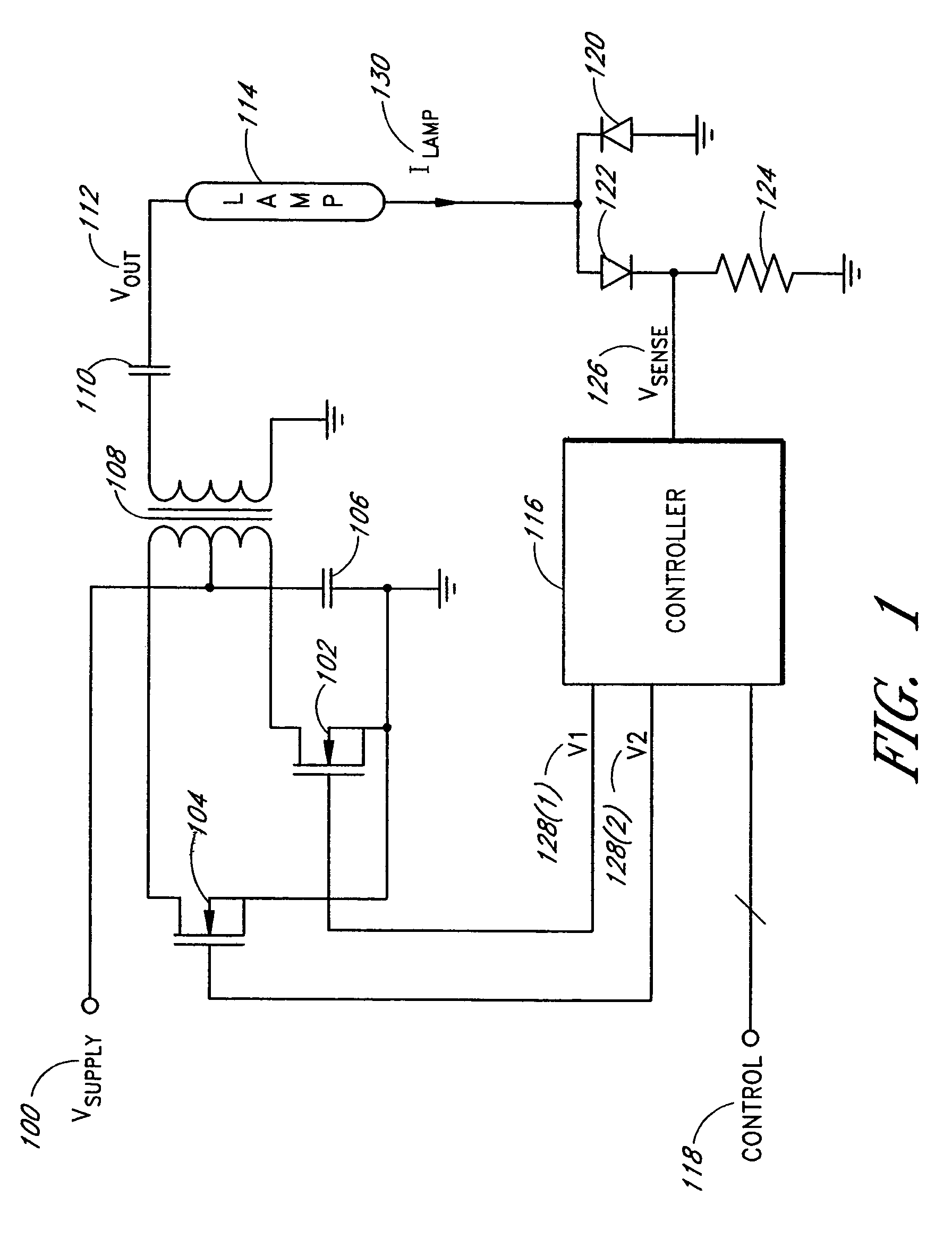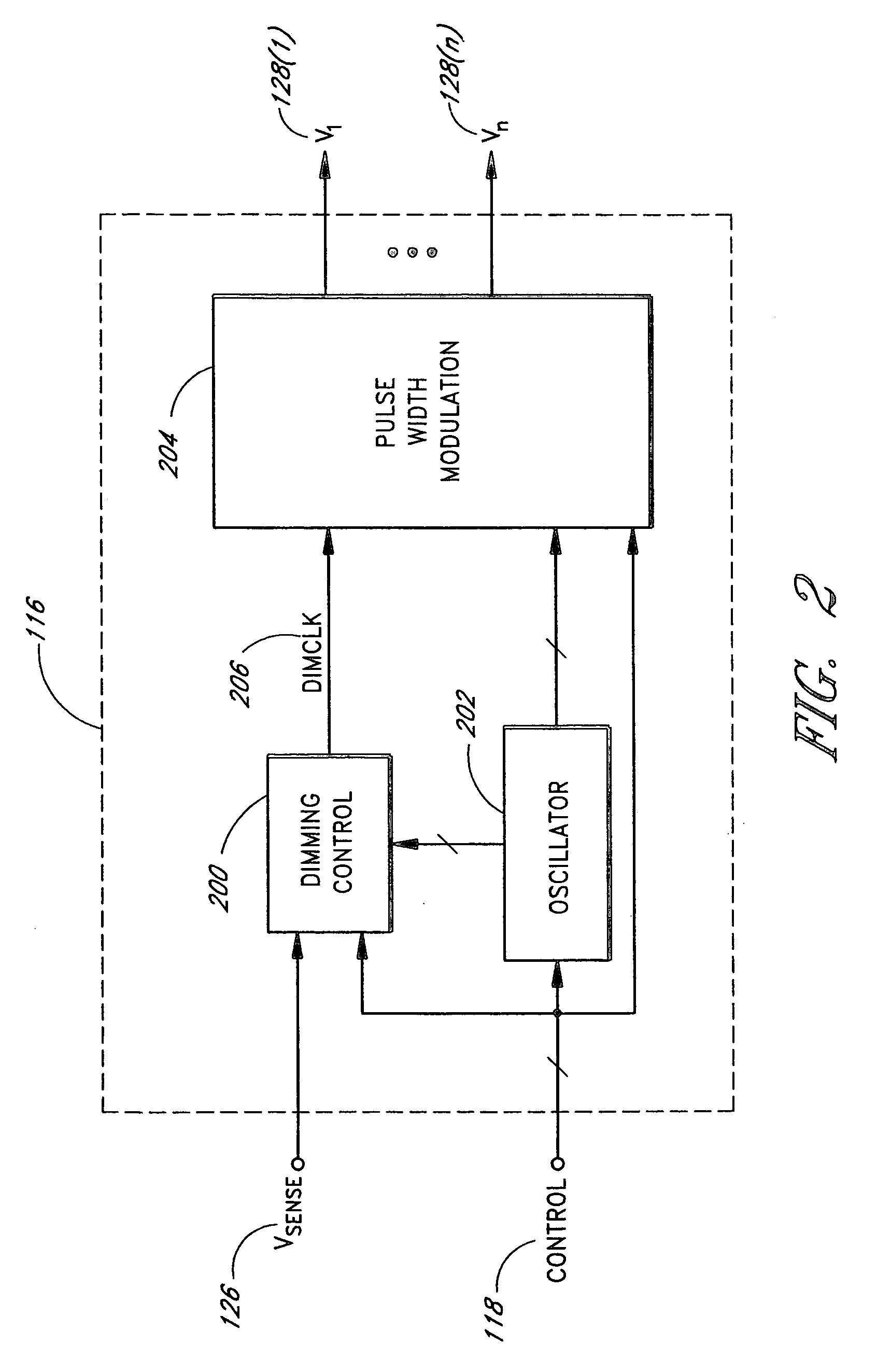Method and apparatus for controlling minimum brightness of a fluorescent lamp
a fluorescent lamp and minimum brightness technology, applied in the direction of electric variable regulation, process and machine control, instruments, etc., can solve the problems of flickering or shimmering, effective limitation of the dimming range of the ccfl, and limited power required to generate ligh
- Summary
- Abstract
- Description
- Claims
- Application Information
AI Technical Summary
Benefits of technology
Problems solved by technology
Method used
Image
Examples
Embodiment Construction
[0024]FIG. 1 is a schematic diagram of a power conversion circuit according to one embodiment of the present invention. The power conversion circuit converts a DC supply voltage (VSUPPLY) 100 into a substantially sinusoidal output voltage (VOUT) 112 to drive a cold cathode fluorescent lamp (CCFL) 114. The supply voltage 100 is provided to a center tap of the primary winding of a transformer 108. An input capacitor 106 is coupled between the supply voltage 100 and ground. The drain terminals of respective field-effect-transistors (FETs) 102, 104 are coupled to respective opposite terminals of the center-tapped primary winding of the transformer 108. The source terminals of the FETs 102, 104 are connected to ground. One of the output terminals of the secondary winding of the transformer 108 is connected to ground while the other output terminal is provided to the first terminal of a capacitor 110. The second terminal of the capacitor 110 is coupled to the input of the CCFL 114.
[0025]A...
PUM
 Login to View More
Login to View More Abstract
Description
Claims
Application Information
 Login to View More
Login to View More - R&D
- Intellectual Property
- Life Sciences
- Materials
- Tech Scout
- Unparalleled Data Quality
- Higher Quality Content
- 60% Fewer Hallucinations
Browse by: Latest US Patents, China's latest patents, Technical Efficacy Thesaurus, Application Domain, Technology Topic, Popular Technical Reports.
© 2025 PatSnap. All rights reserved.Legal|Privacy policy|Modern Slavery Act Transparency Statement|Sitemap|About US| Contact US: help@patsnap.com



